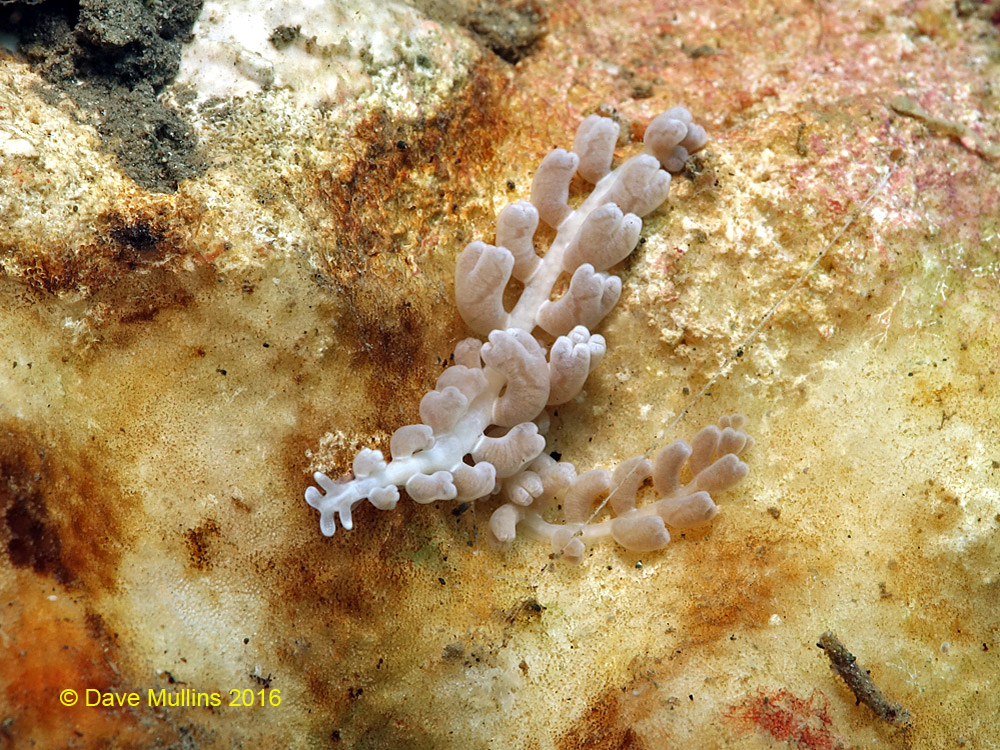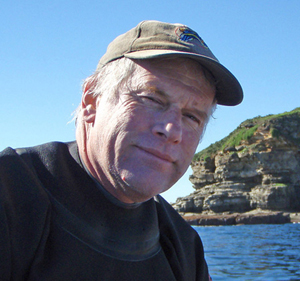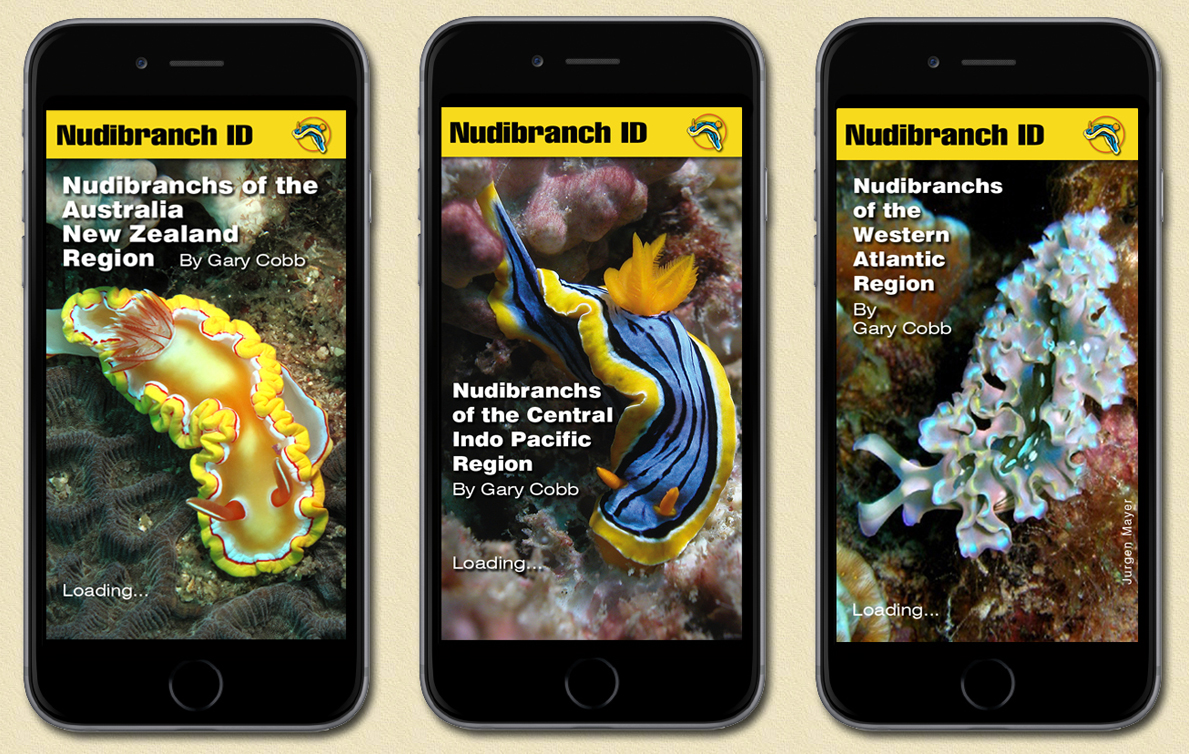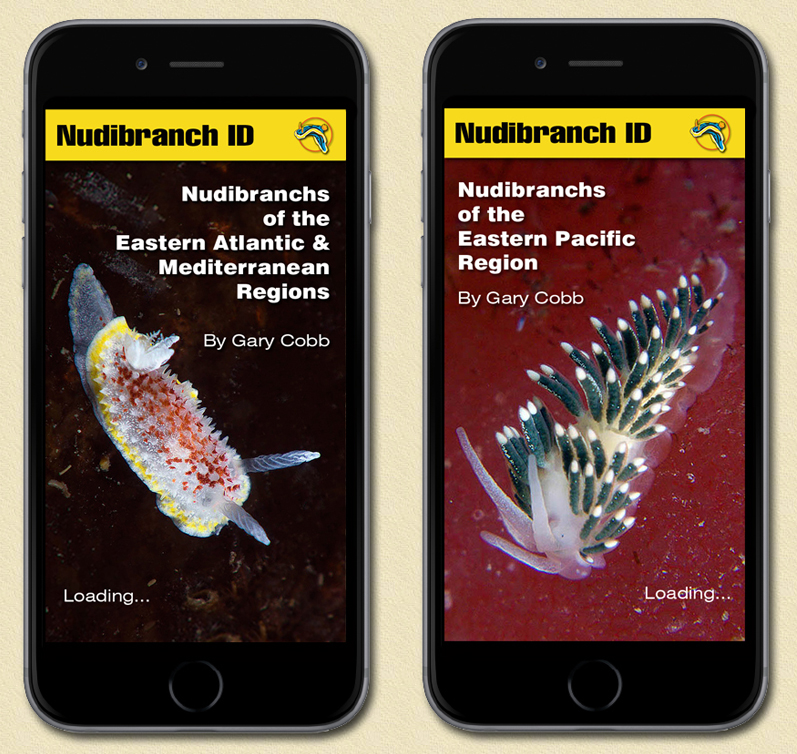 |
Image courtesy of Dave Mullins
4 metres, in the Lawadi muck, Milne Bay, PNG. PNG
Sony DSC-RX100 in Nauticam Housing with wet macro diopter, Inon Z220 strobe.
Embletonia gracilis Risbec, 1928
Do you have a "bucket list" of special sea slugs you want to see before you die? One of the prominent ones on my list was the curious looking Embletonia gracilis. This species had eluded all my efforts to locate it for many years. I finally found it on the very last dive I did on a recent short trip to Milne Bay, PNG. It is an unusual looking and infrequently sighted nudibranch whose position in taxonomy has been somewhat controversial.
Originally, and for many years, Embletonia gracilis (family Embletoniidae) had been classified as an Aeolidina member closely allied to the Tergipedidae however following a suggestion to the contrary by Bob Burn the taxonomists M.C. Miller and R. C. Willan decided twenty years later to write a paper (1991) relocating it as a dendronotid (suborder Dendronotacea) based on morphological evidence. This was not readily accepted by many of their peers at the time but recent (unpublished) molecular evidence has proved the argument to be correct (Dave Behrens - personal comm.).
I'm fascinated just looking at it. Note the very small "head", the unusual bifurcated oral veil (there are no oral tentacles), the small stout and simple rhinophores (significantly without pockets), the single row of cerata down each side of the long narrow body, their inflated appearance and most unusual - their terminations. Each ceras most usually ends in a blunt four-fingered tip each carrying specialised pads. The cerata can reportedly change shape and inflate when disturbed and even be autotomized. The number of terminations can also vary even within the one individual from one to four. Different taxonomists have variously reported the presence or absence of cnidosacs in the different specimens found in various localities and yet others state the terminal pads can contain nematocysts. It is interesting to note that temperate specimens in South Africa, Japan, New Zealand and southern Australia are all much smaller than those from the tropics.
To quote from Miller & Willan: "Embletonia is, therefore, an enigmatic nudibranch genus.."
References:
- Gosliner, T.M. & Griffiths, R.J. 1981. Description and revision of some South African Aeolidacean Nudibranchia (Mollusca, Gastropoda). Annals of the South African Museum, 84: 105-150.
- Gosliner, T.M., Valdés, A. & Behrens, D.W. (2011). Nudibranch and Sea Slug Identification Indo-Pacific. New World Publications Inc, Florida, USA.
- Miller, M.C. & Willan, R.C., 1991. Redescription of Embletonia gracile Risbec, 1928 (Nudibranchia: Embletoniidae): Relocation to Suborder Dendronotacea with taxonomic and phylogenetic implications. Journal of Molluscan Studies, 58: 1-12, Figs 1-8.
- Rudman, W.B., 1998. Suborder Aeolidina. Pp 1011-1017. In: Beesley, P.L., Ross, G.J.B. & Wells, A. (eds). Mollusca: The Southern Synthesis. Fauna of Australia, Vol 5. CSIRO Publishing: Melbourne. Part B, 565-1234.
Dave Mullins
Queensland, Australia
marineimages@hotmail.com
March 2016
Send Dave email at: marineimages@hotmail.com
Dave Mullins on location
 |
|
Nudibranch reference material comes in many shapes and sizes but primarily books and websites. The problem with reference books is outdated material and their weight when travelling. Taxonomy is changing and adding or altering names at a rapid rate. The problem with the Internet is range and accessibility.
Now, thanks to the development by and ongoing efforts of Gary Cobb there is a series of smart device applications called Nudibranch ID. When the series is complete you'll be able to reference all the nudibranchs of the world.
No web connection required.
The Nudibranch ID App Series:
These field guides will place right at your fingertips, anytime and anywhere, an outstanding selection of Nudibranchs found throughout the World.
Featuring:
Indo-Pacific - version 19.0 - 700 species (available now)
Eastern Pacific - version 16.0 - 423 species (available now)
Australia and New Zealand - version 18.0 - 1139 species (available now)
Eastern Atlantic/Mediterranean Sea - version 5.0 - 680 species (available now)
Western Atlantic - version 4.0 - 498 species (available now)
Indian Ocean/Red Sea - (out soon)
Western Pacific - (out soon).
Available as iPhone or Android versions.
These are true Apps not just simple identification guides. Search functions and the ability to create lists for emailing are game breakers in this field. They are updated (for free) regularly.
Visit: www.inudibranch.com for a full description.
 |
 |
